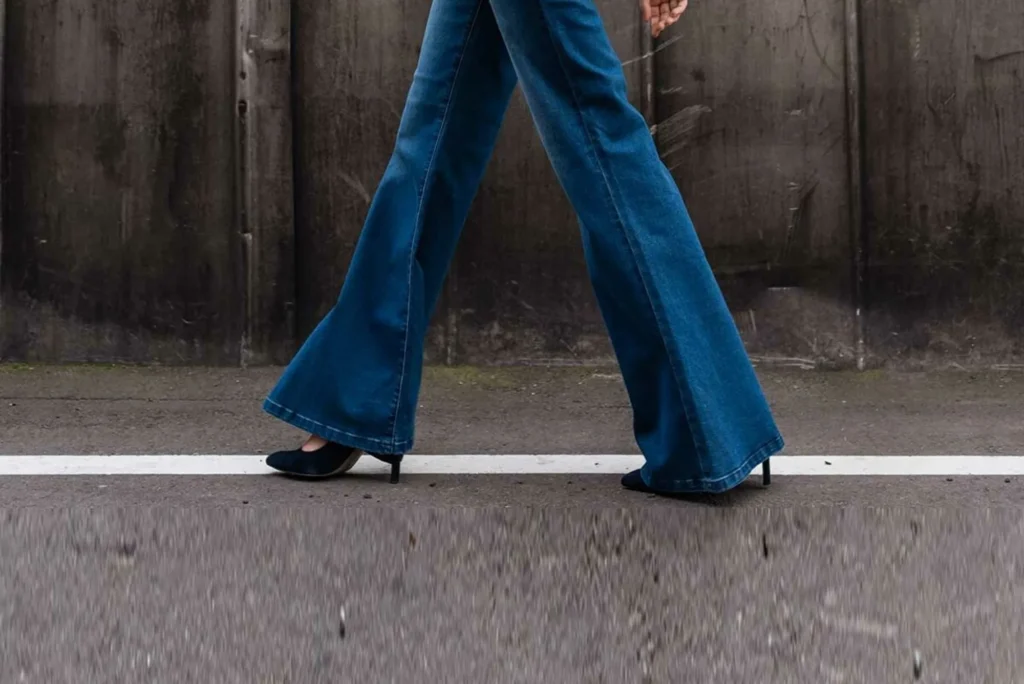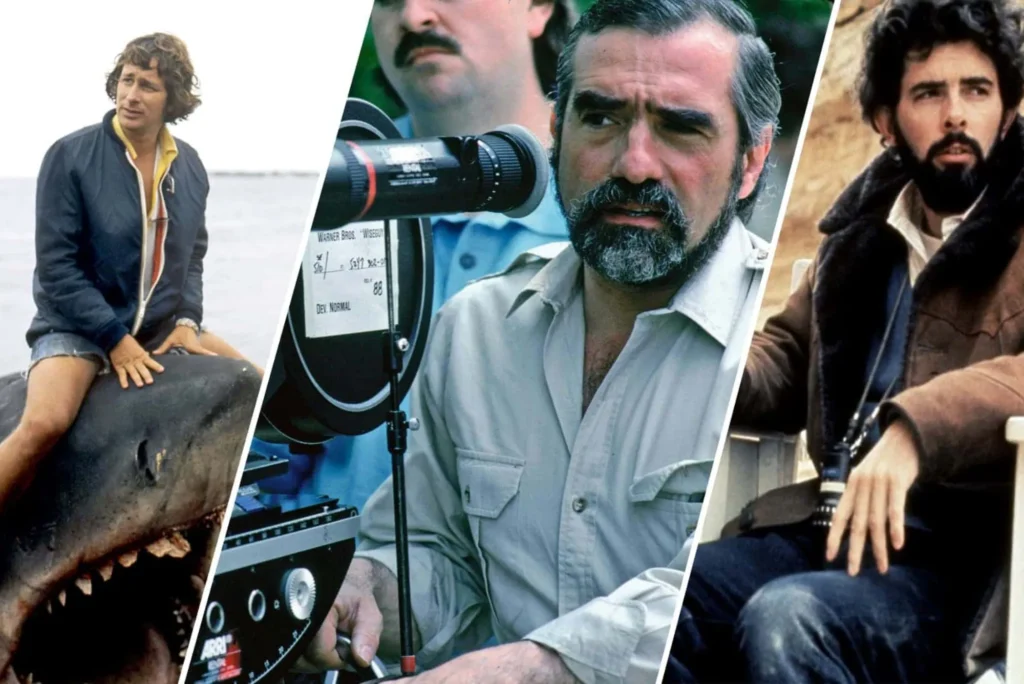The 1970s was a decade of fashion revolution, where the cultural, social, and political changes of the previous decade continued to influence the way people dressed.
From the vibrant disco scene to the laid-back hippie movement, 70s fashion was a reflection of diversity, individuality, and bold experimentation.
Today, the allure of 70s style continues to inspire designers and fashion enthusiasts alike, making it a relevant and timeless era to explore.
Overview of the 70s Era
Historical Context
The 70s emerged as a time of transition and innovation in fashion. Following the liberating trends of the 1960s, which saw the rise of youth culture and countercultural movements, the 70s continued to push boundaries.
The aftermath of Vietnam War protests, the women’s liberation movement, and the civil rights struggles influenced societal attitudes and, consequently, fashion choices.
The fashion landscape of the 70s was heavily influenced by music, film, and art. The disco movement brought glittering fabrics and flamboyant styles to the forefront, while the hippie culture celebrated natural fibers, relaxed silhouettes, and eclectic patterns.
Meanwhile, the rise of punk rock challenged mainstream fashion with its DIY ethos and rebellious spirit.
Key Themes
At its core, 70s fashion was about self-expression and individuality. It was a decade where men embraced bold colors, daring patterns, and unconventional styles.
From the disco dance floors to everyday streetwear, there was a wide spectrum of fashion choices that catered to various subcultures and personal tastes.
Iconic Clothing Styles
Bell-Bottoms
One of the most iconic symbols of 70s fashion, bell-bottoms epitomized the era’s penchant for exaggerated silhouettes. Originating from naval uniforms and adopted by hippies in the 60s, bell-bottoms became mainstream in the 70s.

These trousers were characterized by their tight fit around the thighs and knees, flaring out dramatically from the calves downwards.
In modern fashion, bell-bottoms have made a comeback with updated cuts and fabrics. Designers have reinterpreted this classic style to appeal to contemporary tastes, offering versions that maintain the flare while providing a more tailored fit.
Today, bell-bottoms are celebrated for their retro charm and ability to add flair to any outfit.
Leisure Suits
The leisure suit was a quintessential ensemble of 70s casual wear. Made from synthetic fabrics like polyester, leisure suits were comfortable yet stylish, often featuring bold patterns and vibrant colors.
These suits embodied the laid-back sophistication of the era and were popular for both daytime outings and evening social events.
While the original leisure suits may seem outdated today, elements of their design continue to influence modern fashion.
Contemporary blazers and trousers often incorporate aspects of leisure suits, such as relaxed cuts and retro-inspired patterns.
This blending of old and new allows men to channel the effortless cool of 70s style while maintaining a contemporary edge.
Disco Influence
The disco era of the 70s brought a new level of glamour and extravagance to men’s fashion. Disco clubs became showcases for flamboyant outfits made from shiny fabrics like satin and lurex.
Men adorned themselves in sequined shirts, flared trousers, and platform shoes, creating a spectacle of light and movement on the dance floor.
To incorporate disco elements into modern wardrobes, consider statement pieces that capture the essence of disco without being too literal.
A metallic shirt paired with tailored trousers can evoke the spirit of disco glamour, while accessories like oversized sunglasses and bold jewelry add a touch of extravagance.
By embracing the opulence of disco fashion in a contemporary context, men can pay homage to the era’s enduring influence on style.
Denim Craze
Denim was another hallmark of 70s fashion, symbolizing both ruggedness and rebellion. Jeans became a wardrobe staple for men, with styles ranging from straight-legged to bell-bottomed.
Denim jackets also gained popularity, often adorned with patches, embroidery, or shearling collars.
Today, denim continues to be a versatile and enduring fabric in men’s fashion. Designers regularly reinvent classic denim pieces, offering everything from distressed jeans to tailored denim shirts.
The appeal of denim lies in its durability and timeless appeal, making it a cornerstone of both casual and semi-formal attire.
Key Accessories
Platform Shoes
Platform shoes were a defining accessory of 70s fashion, known for their chunky soles and elevated heels. These shoes added height and a sense of drama to any outfit, making them a favorite among disco-goers and fashion enthusiasts alike.
Platform shoes came in various styles, from sleek dress shoes to casual sandals, each offering a distinct silhouette and statement-making appeal.
In contemporary fashion, platform shoes have experienced a resurgence in popularity. Modern interpretations of platform shoes often feature streamlined designs and lightweight materials, making them more comfortable and versatile for everyday wear.
Whether paired with tailored trousers or casual denim, platform shoes continue to be a bold choice for men seeking to elevate their style with a nod to 70s fashion.
Wide Belts
Wide belts were essential for defining the waist and adding structure to loose-fitting outfits in the 70s. These belts often featured bold buckles and intricate designs, serving as both a functional accessory and a fashion statement.
Wide belts were particularly popular with leisure suits and flared trousers, creating a balanced silhouette that emphasized the waistline.
In today’s fashion landscape, wide belts have evolved to complement modern styles while retaining their retro charm.
Men can incorporate wide belts into their wardrobes to accentuate the waist and add visual interest to outfits.
Whether worn over a tailored blazer or cinched around a casual shirt, wide belts offer a versatile way to infuse a touch of 70s flair into contemporary attire.
Headwear
Headwear played a significant role in completing a 70s-inspired look, offering both style and practicality. Wide-brimmed hats, such as fedoras and floppy hats, were popular choices among men seeking to add a touch of sophistication to their outfits.
These hats provided shade from the sun while enhancing the overall aesthetic with their classic silhouettes and timeless appeal.
In modern fashion, hats continue to be a popular accessory for men looking to elevate their style. Fedora hats, in particular, have enjoyed a resurgence in popularity, with contemporary designs that blend traditional craftsmanship with modern sensibilities.
Whether worn with a tailored suit or a casual ensemble, hats offer a versatile way to incorporate vintage-inspired elements into everyday wear.
Influential Figures and Icons
Music Icons
Musicians played a pivotal role in shaping 70s fashion, using their public personas to challenge conventions and redefine style norms.
Bands like The Rolling Stones and artists like David Bowie became synonymous with the era’s eclectic fashion trends, influencing everything from stage costumes to everyday attire.
David Bowie, in particular, embraced androgyny and avant-garde fashion, blurring the lines between masculinity and femininity with his innovative style choices.
The influence of music icons on 70s fashion continues to resonate today, with designers and performers alike drawing inspiration from their bold aesthetics and boundary-pushing creativity.
The legacy of musicians like Bowie and The Rolling Stones serves as a reminder of the transformative power of fashion in shaping cultural narratives and individual identities.
Hollywood Influence
Hollywood films and television shows of the 70s provided a visual showcase for emerging fashion trends, influencing audience perceptions and consumer behavior.
Actors like John Travolta became style icons through their on-screen portrayals, with films like “Saturday Night Fever” showcasing the disco lifestyle and its sartorial expressions.

Travolta’s iconic white suit in the film became an enduring symbol of 70s glamour and sophistication, inspiring countless imitations and adaptations in subsequent decades.
Today, the influence of Hollywood on 70s fashion can be seen in contemporary reinterpretations of classic styles and motifs.
Designers frequently look to film archives for inspiration, revisiting iconic costumes and characters to create modern collections that pay homage to the golden age of cinema.
The enduring appeal of Hollywood-inspired fashion underscores the timeless allure of 70s style and its ability to captivate new generations of fashion enthusiasts.
Patterns and Fabrics
Popular Patterns
Patterns played a crucial role in defining 70s fashion, offering a canvas for creative expression and individuality.
Paisley prints, with their intricate swirls and rich colors, were a favorite among hippies and bohemian enthusiasts seeking to embrace a free-spirited aesthetic.
Floral patterns, inspired by nature and botanical motifs, added a romantic and whimsical touch to clothing, enhancing the era’s laid-back and organic sensibilities.
In contemporary fashion, patterns continue to be a versatile and expressive element in men’s clothing. Designers frequently incorporate paisley and floral prints into their collections, offering everything from statement shirts to tailored suits that capture the essence of 70s style.
The resurgence of vintage-inspired patterns underscores the enduring appeal of nostalgia and the desire to reconnect with fashion’s rich cultural heritage.
Fabrics
The 70s introduced a variety of fabrics that reflected the era’s evolving tastes and preferences. Polyester, with its wrinkle-resistant properties and vibrant colors, became synonymous with leisure suits and disco attire, offering a modern alternative to traditional wool and cotton fabrics.
Velvet, with its plush texture and luxurious appearance, was favored for evening wear and formal occasions, adding a touch of opulence to men’s wardrobes.
Today, fabrics from the 70s continue to inspire contemporary fashion designers, who reinterpret classic textiles with modern innovations and sustainable practices.
Recycled polyester and eco-friendly velvet are examples of how the fashion industry is embracing the legacy of 70s fabrics while addressing current environmental concerns.
By combining nostalgia with innovation, designers are creating clothing that appeals to both vintage enthusiasts and eco-conscious consumers alike.
The Resurgence of 70s Fashion Today
The influence of 1970s fashion on contemporary style is undeniable, with designers and fashion enthusiasts continuously drawing inspiration from the decade’s bold aesthetics and cultural movements.
From the runways of high-end fashion houses to the streets of urban centers worldwide, elements of 70s fashion have made a robust comeback, redefining modern menswear with a nostalgic twist.
Current Trends
Fashion shows in recent years have prominently featured nods to 70s style, showcasing collections that celebrate the era’s eclectic mix of textures, patterns, and silhouettes.
Designers like Gucci, Saint Laurent, and Prada have led the charge in reviving 70s fashion, offering modern interpretations of classic pieces that resonate with today’s fashion-forward consumers.
Flared Trousers: One of the most iconic pieces of 70s fashion, flared trousers have reemerged as a staple in contemporary men’s wardrobes.
Designers have updated the silhouette with slim-fit options that retain the flare at the hem, allowing for a balanced look that nods to retro style while maintaining a modern edge.
Bold Patterns: Paisley, floral, and geometric prints, once synonymous with 70s fashion, have experienced a resurgence in popularity.
These eye-catching patterns are now incorporated into shirts, jackets, and accessories, adding a vibrant and expressive element to everyday attire.
Platform Shoes: Platform shoes have made a dramatic return, with designers offering updated versions that blend retro aesthetics with contemporary comfort and style.
From casual sneakers to dress shoes, platforms add height and a sense of vintage flair to any outfit.
Wide-Lapel Blazers: The wide lapel blazer, a signature of 70s suiting, has become a statement piece in modern menswear collections.
These blazers are characterized by their broader lapels and structured shoulders, offering a sophisticated yet nostalgic look for formal and casual occasions alike.
Celebrity Influence
Modern celebrities have played a pivotal role in popularizing 70s-inspired fashion trends, wearing them on red carpets, in music videos, and on social media.
Figures like Harry Styles, known for his eclectic style and adventurous fashion choices, frequently incorporate elements of 70s fashion into his wardrobe.
Whether it’s a patterned shirt, flared trousers, or platform shoes, celebrities have helped to cement 70s style as a mainstream trend that appeals to a global audience.
Street Style
In urban fashion hubs around the world, 70s-inspired pieces have become street style staples. Fashion-conscious individuals mix vintage finds with contemporary garments, creating personalized looks that pay homage to the era’s sartorial legacy.
Street style photographers capture these outfits, showcasing how individuals reinterpret and reinterpretate 70s fashion in their own unique ways.
Retail and Online Presence
The resurgence of 70s fashion is not limited to high fashion runways and celebrity wardrobes. Retailers and online platforms have embraced the trend, offering a wide range of clothing and accessories that cater to consumers seeking to incorporate retro elements into their everyday style.
Vintage stores, thrift shops, and online marketplaces like Etsy and eBay provide access to authentic 70s pieces, allowing fashion enthusiasts to curate a wardrobe that reflects their appreciation for nostalgia and timeless style.
Cultural Impact
Beyond its aesthetic appeal, the resurgence of 70s fashion reflects broader cultural trends and societal shifts.
The rediscovery of vintage styles parallels a growing interest in sustainability and ethical fashion practices, as consumers seek to reduce their environmental footprint by embracing timeless clothing that transcends seasonal trends.
Additionally, the celebration of diversity and individuality in 70s fashion resonates with contemporary movements advocating for inclusivity and self-expression in fashion and beyond.



